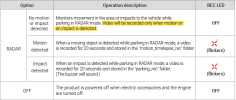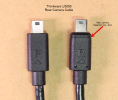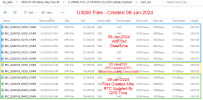RickZ
New Member
I'm experiencing the same problem in the UK, as far as I'm aware the rear window on my Hyundai Ioniq 5 is a standard tint with no additional coatings or films. The retailer I bought the U3000 from sent me a new rear camera with cable plus a front camera. After connecting the new items my rear camera still doesn't respond to movement when in radar mode. Thinkware claim that this is a known issue in the USA due to different Radar use as a consequence of different radar laws.My contact at Thinkware Support North America (Mondo System) had me send back the rear camera and rear connecting cable to have Thinkware check them. Today, I received a replacement U3000 rear camera and rear connecting cable. I installed them, but this time I ran the connecting cable on a 95% different path than any other dash camera cable in my car.
Unfortunately, the two parking mode session tests with the new camera and cable resulted in the rear camera radar not detecting anything. I've sent my findings to Thinkware.
Here are frame grabs from my monitoring camera (A229 Pro 3CH) which show two events that should have been detected. I addition to waving my hand about two feet away from the rear window glass, I opened and closed the trunk lid as well. The only motion time-lapse videos created were when I walked to the front driver side door.
View attachment 69495 View attachment 69494
My car's rear window is standard automotive glass. There are no special coatings or films installed on any window in my car. The U3000 rear camera is installed in a wide gap between the FOB antenna grid line and the rear window defroster's top grid line.
When I select motion rather than radar mode then both LEDs are on continuous and my rear camera does record all movement. My understanding is that radar mode reduces power consumed extending parking mode and that radar and motion modes both sense movement the same way, the radar component just provides the pre impact recording and tells the camera to record from the point of impact giving a 20 sec recording which includes the point of impact. Where in motion mode all movement sensed is recorded whether there's an impact or not which consumes more power in parking mode.
Thinkware confirmed to me that in radar mode the rear camera LED should illuminate on movement being sensed but only record on sensing an impact. If this is the case why is movement sensed in motion mode but not in radar mode, it's as if there's a design error in the rear camera or the app that selects radar mode.





